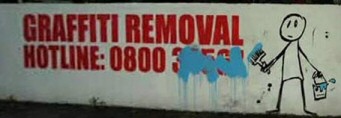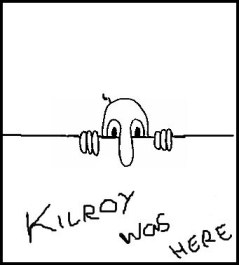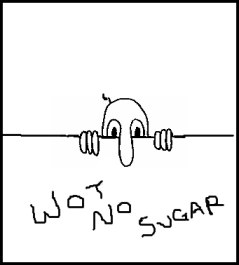Two Classic Urban Myths from the 1940s
Kilroy Was Here
There are numerous urban myths surrounding the origin of the catch phrase: ‘Kilroy was here’.
What happened was that during the 1940’s a plague of graffiti appeared on walls all over Europe. If you have a Grandfather or Uncle who lived through World War, ask them for their version of the origin of the legendary graffiti: ‘Kilroy was here’.
Perhaps the best way to research the history is to go back close to the time when Kilroy emerged. Soon after the war was won, The American Transit Association sponsored a competition to find the original Kilroy. They declared James J. Kilroy of Halifax, Massachusetts as the source of the legend. A useful corroboration comes from the New York Times of December 24th 1946. The paper reports thus:
‘During the war he was employed at the Bethlehem Steel Company’s Quincy shipyard, inspecting tanks, double bottoms and other parts of warships under construction. To satisfy superiors that he was performing his duties, Mr. Kilroy scribbled in yellow crayon ‘Kilroy was here’
on inspected work.’
Chad on the Walls
Chad was the figure with peering over the wall, with the long nose, the hands and above all, those eyes. Chad was probably a British phenomenon. My reasoning is that Americans did not suffer from rationing, and Chad was always moaning, in English not French or German.
Wot no tea?
Wot no sugar?
Origins of Chad
Ken Green writes:
I always understood that Chad was invented by trainees at the radar school of the RAF, the positive and negative line shown on a graph was adapted with + signs for the eyes. Some wit wrote ‘Wot no beer’ under it and a legend was born.
Other evidence points to the British cartoonist George Chatterton, inventing Chad in 1937. What happened next was that during the war Chad and Kilroy combined and in the hands of Millions of servicemen, they cocked-a-snook at authority.
One urban myth suggests that Chads on walls and ‘Kilroy was here’ slogans, helped the war effort to undermine the enemy. The problem with such views is that I cannot imagine how the average Japanese soldier could read Chad’s comments. To me, it is more likely that Chads and Kilroy irritated our great grandparents as much as modern graffiti irritates our present grandparents. But our grandparents try and put a positive spin on their own misdeeds. The Chad urban myth lives on.
Chad’s Grandson Strikes

Will and Guy wonder if ‘Engrish’ is a modern oriental cousin of Chad and Kilroy.

